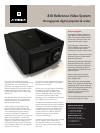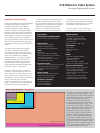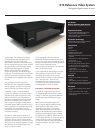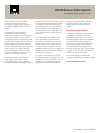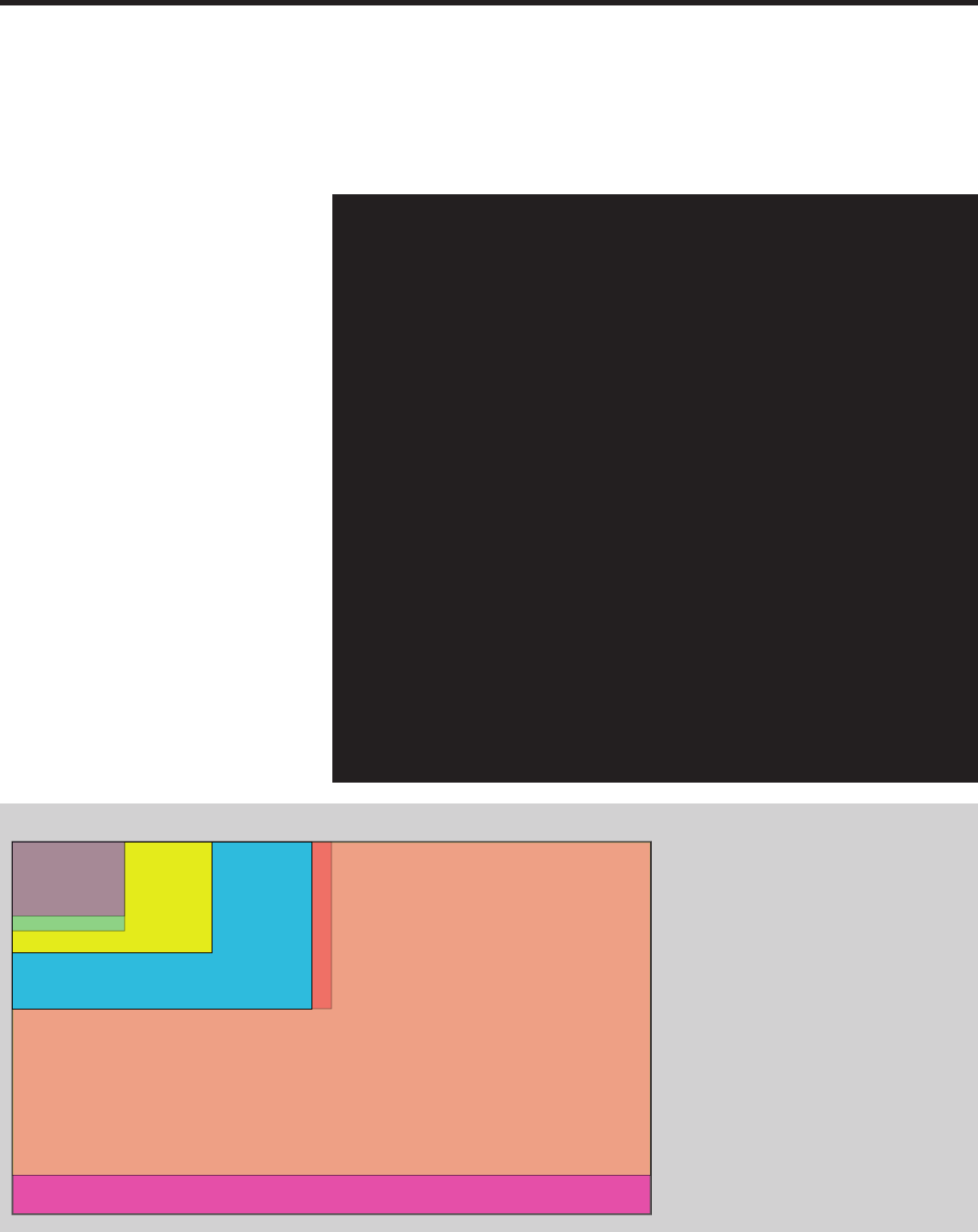
Calibration: the key to quality
Trained staff at Meridian’s dedicated facilities
individually calibrate each projector in a
procedure that takes over four days to
complete, mainly as a result of the sheer
number of pixels to be calibrated. Different
calibration steps require different groupings
of pixels to be considered: for example flat
field calibration is carried out for every group
of four adjacent pixels; other parameters
may require adjustment at the individual pixel
level. The 810’s calibration technology was
developed exclusively for Meridian by William
Phelps.
It is not sufficient to calibrate a projector
in isolation – especially one that offers
such a high-resolution, high-quality image.
Instead, the projector and its accompanying
scaler are considered as a complete,
indivisible system – for example, different
calibration procedures are carried out to
suit Standard and High Definition signals;
the scaler determines the signal format
and automatically activates the appropriate
calibration profiles in the projector.
In addition, calibration bears in mind the
conditions in the viewing environment. The
aim of a projector is not to get the maximum
light on to the screen: on the contrary, most
dedicated home cinema rooms are darkened,
and it is all too easy, with a powerful
projection system, to get an image that is too
bright – which apart from losing visual detail
can lead to a tiring viewing experience.
The correct approach is to standardise the
amount of light reflected from the screen.
This is the method employed by the Society
of Motion Picture and Television Engineers
(SMPTE), and used throughout the film
industry. Their standard requires a light
level of a nominal16 foot-Lamberts to be
reflected from the screen when no film is in
the projector gate. In practice, the average
brightness of a bright scene in a cinema is
around 60% to 75% of this amount.
Thus the projector must be individually
calibrated for the specific space in which
810 Reference Video System
10-megapixel digital projector & scaler
Digital Cinema 4K 4096 x 2160
Meridian 810 Reference Video System 4096 x 2400
Digital Cinema 2K 2048 x 1080
HDTV 1080i/p 1920 x 1080
HDTV 720p 1280 x 720
PAL SD 720 x 576
NTSC SD 720 x 480
This diagram provides a comparison of video
resolutions, from standard definition to the
Ultra High Definition 4096 x 2400 resolution
of the Meridian 810 system – significantly
higher than four full-spec HD screens
laid side by side. The purple and green
rectangles (top left) indicate the resolution
of a Standard Definition (SD) image – 720
pixels wide by 480 (NTSC) or 576 (PAL)
high and generally interlaced. A 720p HDTV
image is 1280 pixels wide by 720 high
and progressive-scan, while a ‘full spec’
HDTV image is 1920 x 1080 progressive
(‘1080p’) – 1080i (interlaced) images are
also common. A standard Digital Cinema
specification, generally referred to as ‘2K’,
delivers 2048 x 1080 pixels progressive. The
latest ‘4K2K’ Digital Cinema spec is 4096 x
2160, delivering an 8-megapixel image. The
810 projector goes beyond this to deliver a
10-megapixel. 4096 x 2400 image.
Beyond High Definition… way beyond.
810 Projector
Outline Technical Specification
All information is subject to revision
Display device
•Aspectratio17:10(Approx.)
•Displaysize(diagonal)1.27”
•EffectiveResolution4096x2400
Lamp
•PKIXenon
•Outputupto4000lumens/825W
•Poweroutputdeterminedbycalibration
process for the application
•Accumulatedlamptimecounterand
lamp replacement warning
Projection Lenses
•Severallensoptionsavailablefromveryshort
throw (back-projection) to long throw
•Anamorphic2.35:1(Cinemascope
®
)
capability
Optical system
•ON/OFFcontrast10,000:1(typical)
•ANSIcontrast300:1(typical)
•Peripheralbrightness>80%
Installation capability
•Vertical±90degrees
•Horizontal±5degrees
•Noiselevel<45dB(A)
System features
•Associated810scaleraccepts
RGB480i–1080p24/48/50/60
•DirectDVIinputsfor4kx2knative
•Low-delaymode
•Displayresolution4096x2400
Connections
•Upto4DVI
•RS232(forcontrol)
•Ethernet
•USB
Power
•Input100–120V,200–240VAC
Single-phase,50/60Hz
•Maxcurrent<15A
•PowerConsumption<1,500W
•PowerConsumption(Standby)<2.7W
Physical characteristics
•Dimensions663x793x342-362mm
W D H (including lens and foot)
•Mass:Net59kgGross69kg
•OperationEnvironment(Temperature):
+10°C – +35°C
•OperationEnvironment(Humidity):
Less than 80% (No condensation)
•StorageTemperature:–5°C–+60°C



